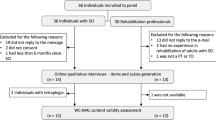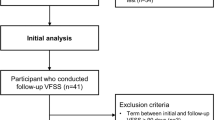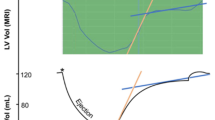Abstract
As a result of the improved medical treatment of infectious diseases, these formerly leading causes of mortality in the United States have been supplanted in rank by chronic events as the major causes of death. The major causes include coronary artery disease, respiratory disease, and cancer. Static and dynamic pulmonary functions in the apparently healthy wheelchair user population were measured and then modelled using stepwise regression. One hundred and nine wheelchair users (97 males, 12 females) with paraplegia (n = 77) or quadriplegia (n = 32) gave informed consent and participated in this study. Subjects ranged from being Olympic caliber wheelchair marathon racers to those who live sedentary life styles. Subjects performed three slow vital capacity (SVC) tests, three forced vital capacity (FVC) tests, and three maximal voluntary ventilation (MVV) tests while seated in their standard wheelchair. The order of the pulmonary function tests was randomized. Subjects also completed two functional residual capacity (FRC) measurements. Analysis of variance revealed significant differences in several pulmonary functions based on gender (FEVC, p = 0.0001, FEV1, p = 0.0001, FEVC 25–75%, p = 0.005, PEF, p = 0.002, FIVC, p = 0.002, RV, p = 0.0001, MVV, p = 0.0001, SVC, p = 0.001). The women's unforced prediction equations using age, height, weight did yield some significant correlations with predictions based upon ambulatory subjects. The men's unforced adapted prediction equations did reveal significant correlations with the validation group for FEVC (r = 0.66, p = 0.007), FEV1 (r = 0.62, p = 0.015), PIF (r = 0.95, p = 0.015), MVV (r = 0.57, p = 0.067), SVC (r = 0.69, p = 0.019), and RV (r = 0.67, p = 0.009). Pulmonary function in male wheelchair users should be predicted using equations which incorporate years with disability and level of impairment. Additional study is required to make any recommendations regarding women wheelchair users. However, study of pulmonary function in women should be made a priority. Pulmonary function is affected by the extent of physical impairment, and tends to decline as years with disability increase.
Similar content being viewed by others
Log in or create a free account to read this content
Gain free access to this article, as well as selected content from this journal and more on nature.com
or
References
Wells C L, Hooker S P (1990) The spinal injured athlete. Adapted Phys Activity Q 7: 265–285.
Van Loan M D, Mc Cluer M D, Loftin J M, Boileau R A (1987) Comparison of physiological responses to maximal arm exercise among able-bodied, paraplegics and quadriplegics. Paraplegia 25: 397–405.
Shephard R (1988) Sports medicine and the wheelchair athlete. Sports Med 4: 226–247.
Cole T M and Edgerton V R (1990) Report of the task force on medical rehabilitation research. National Institute of Health, Hunt Valley, Maryland.
Leaf D A, Adkins R H, Greenwood J, Bahl R A (1990) Maximal aerobic capacity and theoretical implications for longevity revisited in spinal cord injury patients. Ann Sports Med 5: 133–137.
Zwiren L D, Bar-Or O (1974) Responses to exercise of paraplegics who differ in conditioning level. Med Sci Sport 7(2): 94–98.
Ferrara M S, Buckley W E, McCann B C, Limbird T J, Powell J W, Robl R (1992) The injury experience of the competitive athlete with a disability: prevention implications. Med Sci Sports Exerc 24(2): 184–188.
Hulleman K D, List M, Matthes D (1975) Spiroergometric and telemetric investigations during the XXI International Stoke Mandeville Games 1972 in Heidelberg. Paraplegia 13: 109–123.
Kokkola K, Moller K, Lehtonen T (1975) Pulmonary function in tetraplegic and paraplegic. Ann Clin Res 7: 76–79.
Ohry A, Molho M, Rozin R (1975) Alterations of pulmonary function in spinal cord injured patients. Paraplegia 13: 101–108.
Stone D and Keltz H (1964) The effect of respiratory muscle dysfunction on pulmonary function. J Appl Physiol 43: 621–629.
Gross D, Ladd H W, Riley E J, Macklem P T, Grassino A (1980) The effect of training on strength and endurance of the diaphragm in quadriplegia. Am J Med 68: 27–35.
Cherniack R M (1977) Pulmonary Function Testing. W B Saunders Co, Philadelphia, PA.
Miles D S, Sawka M N, Wilde S W, Durbin R J, Gotshall R W, Glaser R M (1982) Pulmonary function changes in wheelchair athletes subsequent to exercise training. Ergonomics 25(3): 239–246.
Crapo R O, Morris A H, Gardner R M (1981) Reference Spirometric values using techniques and equipment that meet ATS recommendations. Am Rev Respir Dis 123: 659–664.
Crapo R O, Morris A H (1981) Standardized single breath normal values for carbon monoxide diffusing capacity. Am Rev Respir Dis 123: 185–189.
Crapo R O, Morris A H, Clayton P D, Nixon C R (1982) Lung volumes in healthy non-smoking adults. Bull Eur Physiopathol Respir 18: 419–425.
Cooper R A (1990) A comparison of pulmonary functions of wheelchair racers in their racing and standard wheelchairs. RESNA 14th Annual Conference Kansas City, MO: 245–247.
Cooper R A, Baldini F D, Robertson R N, Jones D, Monical S, Vosse A (1992) Pulmonary function of elite wheelchair athletes. Palaestra 8(4): 10.
Aronson R M, Carley D W, Onal E, Wilborn J, Lopata M (1991) Upper airway muscle activity and the thoracic volume dependence of upper airway resistance. J Appl Physiol 70(1): 430–438.
Leith D E, Bradley M (1976) Ventilatory muscle strength and endurance training. J Appl Physiol 41(4): 508–516.
Powers S K, Lawler J, Criswell D, Lileu F, Martin D (1992) Aging and respiratory muscle metabolic plasticity: effects of endurance training. J Appl Physiol 72(3): 1068–1073.
Author information
Authors and Affiliations
Rights and permissions
About this article
Cite this article
Cooper, R., Baldini, F., Langbein, W. et al. Prediction of pulmonary function in wheelchair users. Spinal Cord 31, 560–570 (1993). https://doi.org/10.1038/sc.1993.91
Issue date:
DOI: https://doi.org/10.1038/sc.1993.91



